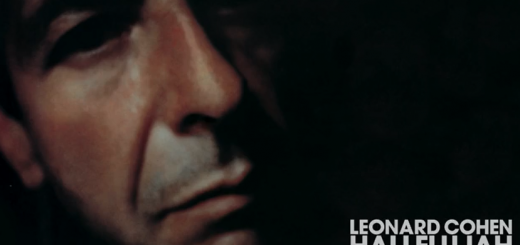One of Us Cannot Be Wrong by Leonard Cohen Lyrics Meaning – Unlocking the Enigma of Poetic Paradox
Lyrics
To make you jealous of me
But the room just filled up with mosquitoes
They heard that my body was free
Then I took the dust of a long sleepless night
And I put it in your little shoe
And then I confess that I tortured the dress
That you wore for the world to look through
I showed my heart to the doctor
He said I’d just have to quit
Then he wrote himself a prescription
And your name was mentioned in it
Then he locked himself in a library shelf
With the details of our honeymoon
And I hear from the nurse that he’s gotten much worse
And his practice is all in a ruin
I heard of a saint who had loved you
So I studied all night in his school
He taught that the duty of lovers
Is to tarnish the golden rule
And just when I was sure that his teachings were pure
He drowned himself in the pool
His body is gone but back here on the lawn
His spirit continues to drool
An Eskimo showed me a movie
He’d recently taken of you
The poor man could hardly stop shivering
His lips and his fingers were blue
I suppose that he froze when the wind took your clothes
And I guess he just never got warm
But you stand there so nice in your blizzard of ice
Oh please, let me come into the storm
Leonard Cohen, a master of the melancholic and the mystical, often weaves his music with threads of intricate lyricism that beckon towards a deeper understanding. ‘One of Us Cannot Be Wrong,’ a track from his debut album ‘Songs of Leonard Cohen’, continues this tradition, presenting a tapestry of images and emotions that both captivate and confound.
At first glance, the song’s title appears to set up a confrontation, a dichotomy that insists on a single truth amidst a cascade of surreal and symbolic verses. But the search for clarity in Cohen’s work is a journey through a hall of mirrors, refracted through the shape-shifting lenses of love, loss, and yearning. Let’s light our own thin green candle to illuminate the shadows of this haunting ballad.
An Ember of Jealousy and the Swarm of Unease
The opening of ‘One of Us Cannot Be Wrong’ sets the stage with an act of alchemy: a green candle lit, not for warmth or light, but to elicit envy. The immediate backfire is swarms of mosquitoes — pests that bring irritation and discomfort. This stark image situates us in a world where intentions and outcomes are at odds, placing the protagonist in a reality where their actions yield unintended consequences.
It’s a vivid metaphor for the complexities of human emotion in relationships. Cohen eloquently captures the futility of such gestures, where the intended emotional manipulation only leads to self-inflicted wounds — an allegory for the self-destructive nature of jealousy.
Torturing Dresses and Confessions: The Harrowing of Love
The second verse delves into the torment of the persona. With a few deft strokes, Cohen draws us a picture of a relationship fraught with pain and passive aggression. The ‘long sleepless night’ becomes tangible, transformed into a granule of torment tucked into a shoe — a secret, intimate curse hidden in the mundane.
Confessing to the torture of a dress is more than just a physical act; it’s a piercing strain on the translucent fabric of intimacy. Describing a dress that ‘the world’ looks through, Cohen hints at the public exposure of private bonds, possibly betraying a vulnerability or the breaking of trusts within a shared connection.
The Phantom Prescription: Unraveling the Physician’s Downfall
In a twist of dramatic irony, a doctor appears as both healer and sufferer. The image of him writing a prescription that includes his patient-lover’s name suggests a merger of personal affliction with professional duty. The objectivity of medical practice crumbles under the weight of his own heartache.
This professional’s descent into ruin, confining himself with the memories of a shared intimacy, evokes a potent blend of pathos and tragedy. Leonard Cohen often blurs the lines between the healer and the wounded, probing the audience to empathize with characters lost in their labyrinthine emotions.
A Mystic’s Fatal Lesson: The Subversion of Sacred Rules
Cohen’s narrative then turns spiritual, but maintains its subversive tone, guiding us through the corridors of sainthood only to expose its hypocrisy. A saint, one assumed to abide by sacred law, taints the very principle of the ‘golden rule,’ which implores love and kindness, by falling prey to his own teachings of love’s darker side.
In a cruel twist of fate, or perhaps as a deliberate punctuation of his doctrine, the saint drowns — a self-inflicted erasure that poses questions about the tensions between moral edicts and the reality of human imperfection. Here, Cohen underscores the concept that love, in its obsessive and consuming flame, can lead to spiritual ruin.
The Icy Requiem: A Portrait of Isolation and Desperate Yearning
Culminating in a chilling encounter, an Eskimo’s film captures a moment of vulnerability, stark against the brutal arctic backdrop. This verse weaves a desolate scene where warmth — both physical and metaphorical — becomes a distant memory. What remains is a desiring gaze through a lens, a separation from warmth epitomized by the subject’s detachment amid a ‘blizzard of ice.’
The shivering imagery here is emblematic of the inability to connect, and the longing to breach the cold distance between two beings. This motive solidifies Cohen’s central theme of a constant, unfulfilled quest for closeness, and the artist’s beseeching, ‘Oh please, let me come into the storm,’ serves as a poignant plea for ingress into the tempest of love and its complexities.








